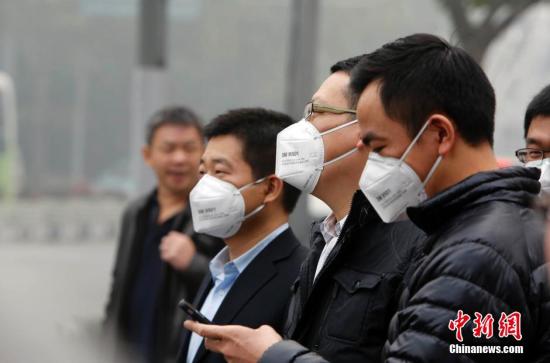Higher targets set for emission reduction
 0 Comment(s)
0 Comment(s) Print
Print E-mail China Daily, January 10, 2014
E-mail China Daily, January 10, 2014
The 2014 target for reduction of nitrogen oxide in the air has been set at 5 percent, a level much more aggressive than in previous years, Minister of Environmental Protection Zhou Shengxian said at a national environmental conference on Thursday.
 |
|
Heavy air pollution hits Shanghai on Dec. 6, 2013. [Photo/CNS] |
Targets for reducing the other three major pollutants — sulfur dioxide, ammonia nitrogen and chemical oxygen demand (which measures the amount of organic compounds in water) — are set at 2 percent for 2014, Zhou said.
The level of nitrogen oxide was expected to fall by more than 3.5 percent in 2013, coming to the 2010 level for the first time in three years, he said.
Total emissions of nitrogen oxide were expected to fall 10 percent by 2015 from the 2010 level, but the figures in fact rose by 2.82 percent by the end of 2012, according to a report released in late December by the National Development and Reform Commission.
As one of the key airborne pollutants and main causes of acid rain that comes mainly from coal consumption and emissions of motor vehicles, nitrogen oxide is toxic and easily transformed into fine particles and ozone after undergoing a series of chemical reactions. Both pose significant threats to human health.
Organic nitrogen oxide is prevalent in smog and haze, according to the report of a research team from the Chinese Academy of Sciences that examined the thick haze in Beijing, Tianjin and Hebei province in January last year.
To meet the 2015 reduction goal for nitrogen oxide emissions, the annual reduction has to reach around 4.8 percent each year for 2014 and 2015, Zhou said.
All kinds of measures will be implemented to ensure the tough targets are met, said Huang Xiaozeng, deputy head of the pollution emission control department of the Environmental Protection Ministry.
"Many of the efforts we've made over the past years started to take effect, including equipping coal-fueled power plants with desulfurization and denitrification facilities, and phasing out high-emission cars from the streets," said Huang.
More than 90 percent of the currently installed coal-fired power generating capacity had desulfurization equipment by the end of 2012, a rise from 60 percent in 2005, according to the ministry.
Zhou said one of the major challenges in China's environmental management is to build a comprehensive management system that takes into account all kinds of pollutants and pollution sources.
The US government controls the emission of more than 180 pollutants from 80 industrial sources, according to Chai Fahe, vice-president of the Chinese Research Academy of Environmental Sciences.
"We are still not doing enough in terms of the number of pollutants and the types of sources under control," said Chai.
Investment from the central government for environmental control reached 22.9 billion yuan ($3.78 billion) in 2013, an increase of 17.4 percent compared with the previous year's investment, Zhou said.






Go to Forum >>0 Comment(s)